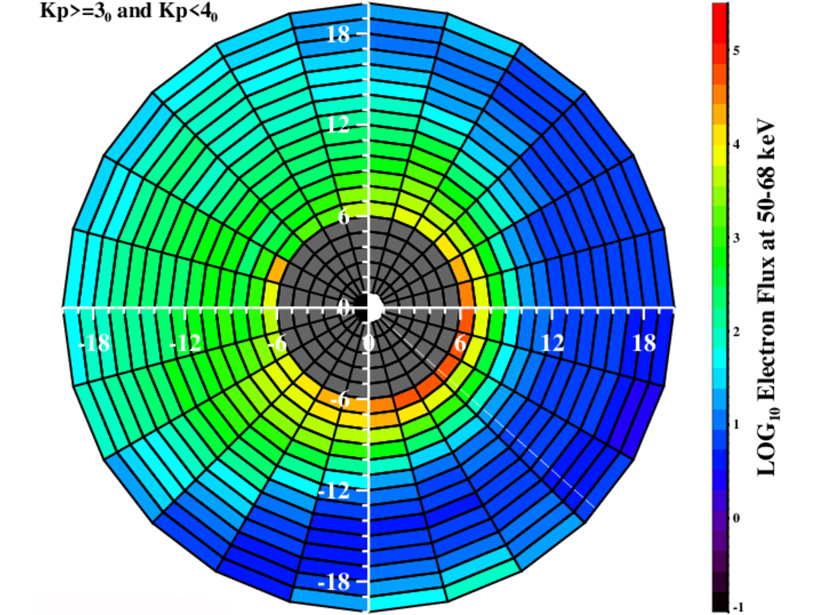Source: Space Weather
Most operational spacecraft orbit Earth within 7 Earth radii. Over recent decades, a few research missions have sampled the plasma and energetic particle environment out to 20 Earth radii. From the limited (but growing) number of observations beyond geosynchronous orbit, Denton et al. [2019] have created an empirical model from the CLUSTER mission, a quartet of orbiting spacecraft with identical instruments.
This model supports prediction of electron flux in the energy range ~45 eV to ~325 keV, as a function of local-time and radial distance from the Earth near the equatorial plane. This is a key energy band associated with spacecraft charging. The model is parameterized by a geomagnetic activity index (Kp index) that ranges from 0 to 9. This new model supports international efforts in benchmarking extreme particles fluxes that may damage spacecraft or individual space-based instruments.
Citation: Denton, M. H., Taylor, M. G. G. T., Rodriguez, J. V., & Henderson, M. G. [2019]. Extension of an empirical electron flux model from 6 to 20 Earth radii using Cluster/RAPID observations. Space Weather, 17. https://doi.org/10.1029/2018SW002121
—Delores J. Knipp, Editor in Chief, Space Weather
Text © 2019. The authors. CC BY-NC-ND 3.0
Except where otherwise noted, images are subject to copyright. Any reuse without express permission from the copyright owner is prohibited.

